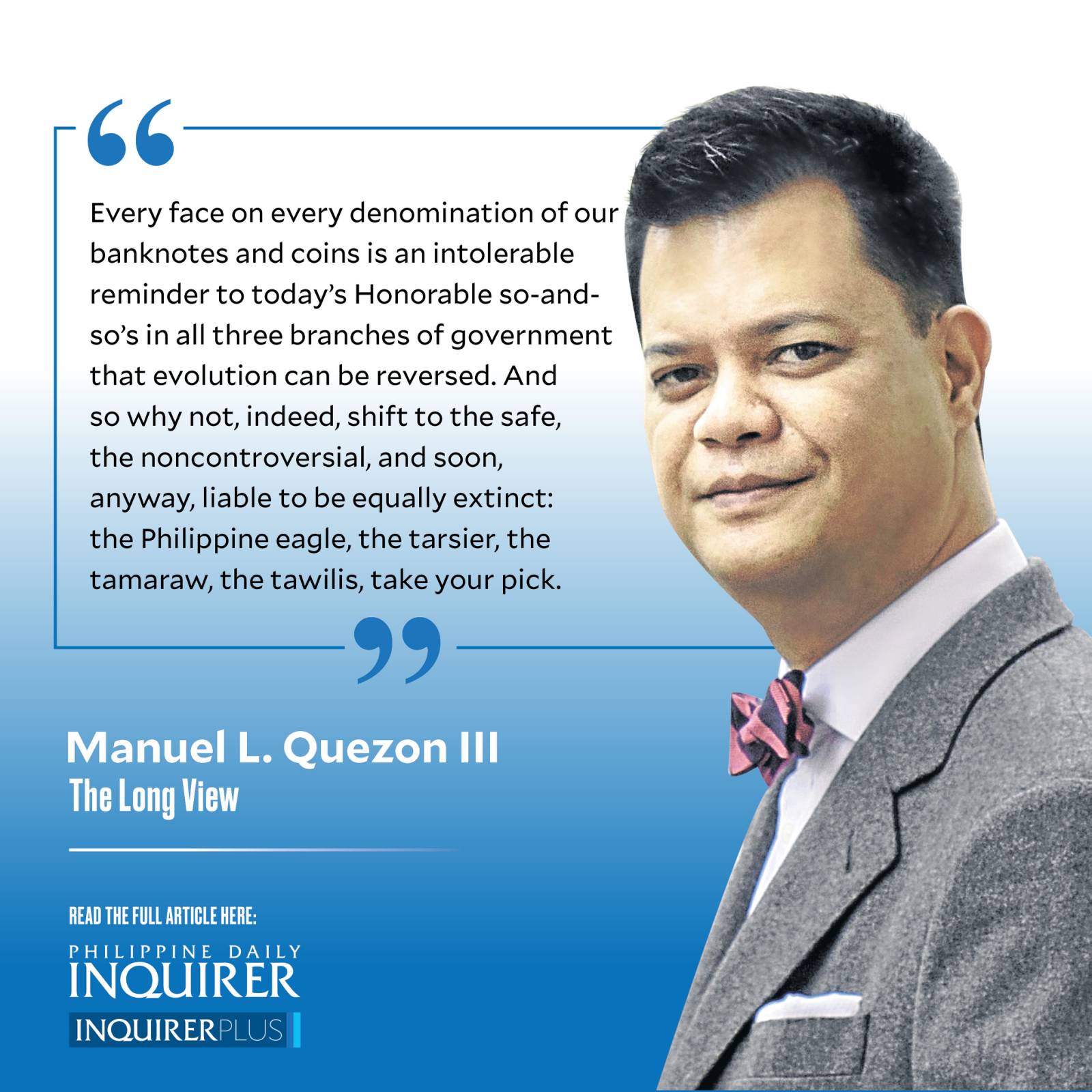Good riddance
When the gigantic concrete bust of Ferdinand Marcos was revealed to the public, I remember reading in the papers a government press release saying it was merely the first of a projected series of monumental heads honoring all the Philippine presidents. Of course, there was never such an intention; it was merely a public relations smokescreen to disguise its true purpose as a colossal and unique monument to the man whose image it bore, and after whom the highway was named, beside which the monument was perched. In a similar manner, the elimination of Chief Justice Jose Abad Santos, Gen. Vicente Lim, and Josefa Llanes Escoda from future P1,000 bills, to be replaced by the Philippine eagle, is a smokescreen for a revision of our banknotes, stripping them of their heroes and statesmen and replacing them with harmless animals.
Emphasis on the word harmless. Much as the internet gleefully reduced the Bangko Sentral ng Pilipinas’ (BSP) various conflicted and conflicting statements to their logical conclusion—Pong Pagong on the P500 bill, why not?—and various individuals and institutions thundered and shrilled, the Monetary Board which decides these things can rest easy because Ambeth Ocampo, the one voice that might have actually moved public opinion, declared it a non-issue in a column.
Article continues after this advertisementThere used to be a logic to our currency: the basic unit, the peso, featured the national hero, Rizal—the place of honor. Whether for coins or notes, then, the closer to the basic unit, the more distinguished the personage; hence Bonifacio on the P2 coin, and Aguinaldo only on the P5 note, with Mabini on the P10 note, then the three architects and founders of our modern nation and republic, Quezon, Osmeña, and Roxas, next; these proved durable despite half a century of Marcosian-inspired erosion (he had to be Alpha and Omega of our history, thus the systematic reversal of the previous generations’ consensus) and the series of martyrs: Aquino then the three wartime martyrs, proved uncontroversial, too. One could argue that the scant public affection or even use of the P200 bill, on the other hand, is proof of what happens when a note is issued with little public demand for the denomination or a consensus for the choices made for design.
A similar rule, for coins: the basic fractional unit, the centavo, was for our earliest hero, Lapulapu, Melchora Aquino on the five-centavo coin, and so on, with Antonio Luna right before Rizal. But many, even historians, have forgotten this and since this is so, it is better to fuss about security features and be bold in the erasure.
It’s often said the public dislikes coins and prefers paper currency, and one wonders if as far back as the pre-martial law era when even our fractional currency was on paper, if the public didn’t prefer that; the point being the public does not matter in the face of the wise mandarins of the Monetary Board and their exalted decisions. When the BSP decided to retire the P20 bill and replace it with coins, it claimed to do so to save money because paper currency was so fragile—fragile, incidentally, because we insist on a high abaca content as patriotic support for abaca farmers. The new P1,000 bill, the same BSP now says will likely experimentally attempt the use of polymer—plastic—as done in other countries. So much for the abaca farmers and, by the way, so much for the reason for the abolition of the P20 bill, because the polymer notes would have solved the original concerns.
Article continues after this advertisementIn a similar manner, our Gollum-resembling governor of the Central Bank tried to placate public feelings by smoothly—but not forthrightly—saying the bills wouldn’t be demonetized right away (it is merely standard practice, so as to give the new design a chance to reach critical mass and the public to exchange old bills for the new; this is how one says something that means nothing).
But he and the other members of the Monetary Board are right in decreeing the second execution of Abad Santos, Lim, and Escoda because they are, even in death and even on soon-to-be-obsolete abaca paper, inconvenient reminders of a generation that sought to build, instead of destroy, institutions. Every face on every denomination of our banknotes and coins is an intolerable reminder to today’s Honorable so-and-so’s in all three branches of government that evolution can be reversed. And so why not, indeed, shift to the safe, the noncontroversial, and soon, anyway, liable to be equally extinct: the Philippine eagle, the tarsier, the tamaraw, the tawilis, take your pick.
——————
Email: mlquezon3@gmail.com; Twitter: @mlq3

















